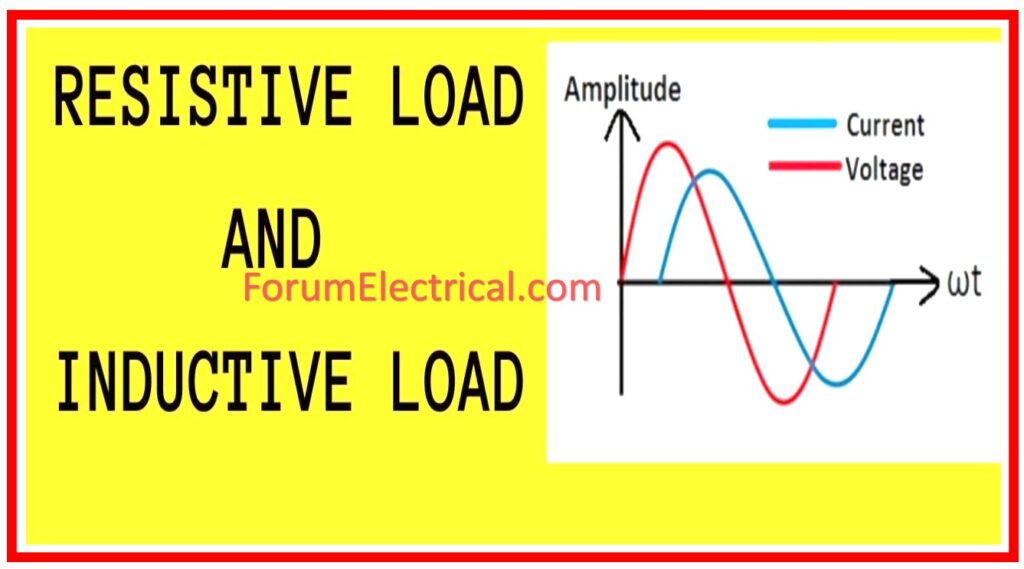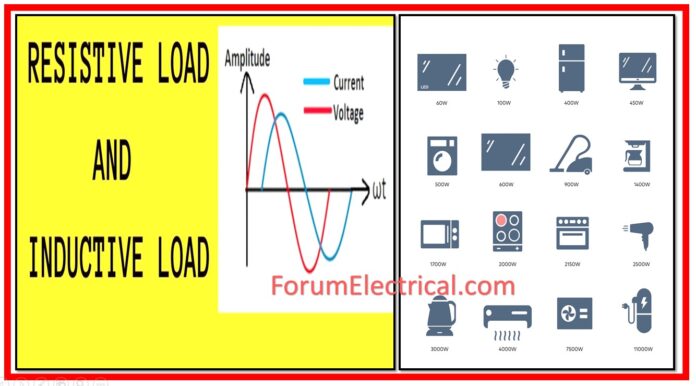What is an Electrical Load?
An electrical load is a device (or) electrical component that absorbs electrical energy and converts it into another kind of energy.
- What is an Electrical Load?
- Types of Electrical Loads
- Resistive Load
- Capacitive Load
- Inductive load
- Combination Loads
- Types of Loads in the Power System
- Domestic Load (or) Residential Load
- Commercial Load
- Industrial Load
- Municipal Load
- Irrigation Load
- Traction Load
- Other Types of Electrical Loads
- According to Load Nature
- According to Phases
- According to Importance
Examples of electrical loads include
- Electric lighting,
- Air conditioners,
- Motors, and
- Resistors.
An electrical load is the component of an electrical circuit that converts current into something useful.
Examples include a light bulb, a resistor, and a motor. A load transforms electricity into heat, light, or motion.
In other words, an electrical load is a circuit component that connects to a well-defined output terminal.
Types of Electrical Loads
There are three types of loads in circuits:
- Capacitive Loads,
- Inductive Loads, and
- Resistive Loads.
These differ in how they use electricity in an alternating current (AC) system.

Some scholars and engineers use the phrases “linear” & “nonlinear” loads, but these are less relevant.
Resistive Load
Resistive loads are those that contain any type of heating element. These include incandescent light bulbs, toasters, ovens, space heaters, and coffee machines.
A load that draws current in a sinusoidal waxing and waning pattern in conjunction with a sinusoidal variation in voltage
The voltage & current lineup has maximum, minimum, and zero points across time. – It is solely resistive with no additional elements.
Common examples of resistive loads include incandescent lamps & electric heaters.
Resistive loads consume power in a way that aligns the current and voltage waves. This signifies that the power factor for a resistive load is unity.
Capacitive Load
Current and voltage in a capacitive load are out of phase, just like in an inductive load. The distinction is that with a capacitive load, the current reaches its maximum value before the voltage rises.
The current waveform precedes the voltage waveform, but with an inductive load, it lags behind. In engineering, capacitive loads do not exist in a standalone form.
No devices are classed as capacitive in the same way that lightbulbs are categorized as resistive and air conditioners as inductive.
Capacitors are important in big circuits for managing power consumption. They are frequently installed in electrical substations to increase the overall “power factor” of the system.
Inductive loads increase the cost of a power system while decreasing the quantity of electricity converted to another kind of energy. Capacitors are installed to counteract this drain.
Capacitive loads cause current waves to lead voltage waves. Thus, the power factor of a capacitive load is superior.
Examples of capacitive loads include capacitor banks, underground cables, and motor starters.
Inductive load
Inductive loads power electrical motors. These are found in a wide range of household appliances and gadgets with moving parts, including fans, vacuum cleaners, dishwashers, washing machines, and compressors in refrigerators and air conditioners.
Unlike resistive loads, with a completely inductive load, current follows a sinusoidal pattern that peaks after the voltage sine wave peaks, so the maximum, minimum, and zero points are out of phase.
Inductive loads cause current waves to lag behind voltage waves. Thus, the power factor of an inductive load is low.
Inductive loads include transformers, motors, and coils.
Combination Loads
Loads are typically not pure resistive, capacitive, or inductive. Many practical loads use different combinations of resistors, capacitors, and inductors.
The power factor of such loads is less than unity & might be lagging or leading.
Single phase motors commonly require capacitors for starting, tuning, and filtering.

Types of Loads in the Power System
The different types of load used in power system are:
- Domestic Load (or) Residential Load
- Commercial Load
- Industrial Load
- Irrigation Load
- Traction Load
Domestic Load (or) Residential Load
Domestic load includes lights, fans, home electric equipment (such as televisions, air conditioners, refrigerators, and heaters), and small motors for water pumping, and so on.
Most home loads are connected for only a few hours per day. For example, the lighting load is linked for a few hours at night.
Commercial Load
Commercial loads are electrical loads designed to be used in commercial settings such as restaurants, shops, and malls.
This form of load happens for more hours per day than domestic load.
Industrial Load
The term “industrial load” refers to the load requirement across different industries.
It comprises all electrical loads utilized in industries as well as the machinery that is employed. Industrial loads may be connected throughout the day.
Municipal Load
This form of load includes street lighting, water supply, and drainage systems, among others.
During the night, street lighting is almost never turned off. Water can be pumped to overhead storage tanks during off-peak hours to increase the system’s load factor.
Irrigation Load
This category includes motors & pumps utilized in irrigation systems that supply water for farming. Irrigation loads are typically delivered during off-peak or nighttime hours.
Traction Load
Traction loads include electric railways, tram cars, and so on. This type of load is at its highest throughout the morning & evening hours.
Other Types of Electrical Loads
According to Load Nature
- Linear loads.
- Non-linear loads.
According to Phases
- Single phase loads.
- Three-phase loads.
According to Importance
- Important electrical loads (e.g. for life safety).
- Essential electrical loads.
- Normal/non-essential electricity loads.









